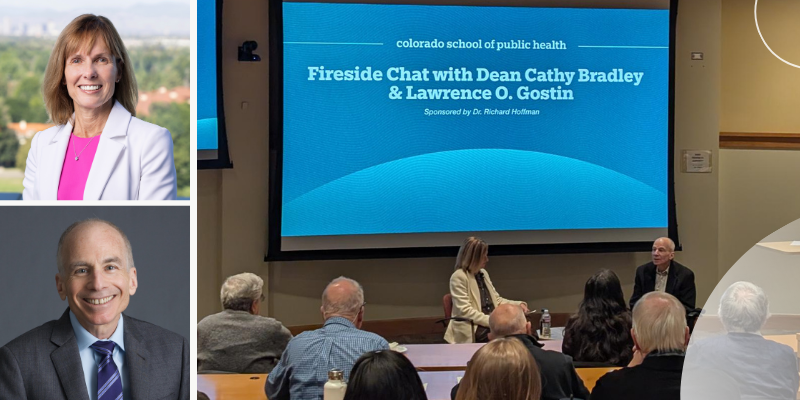Imagine you’re an agricultural worker in the San Luis Valley. What might your top concern be? For Colorado School of Public Health Associate Professor Katherine James, PhD, MS, MSPH, the answer was surprising – food security.
“They work as food producers, yet they are hungry,” she said.
The concern stemmed from access to food, ability to get food, and poverty.
The results were revealed in a community-wide survey of 250 agricultural workers James completed as a pilot project funded under the Total Worker Health Center in the Centers for Health Work and Environment (CHWE). But these answers didn’t come quickly; James has been building trust and working with the San Luis Valley for nearly 20 years. Over those two decades, James has completed dozens of studies, most of which are community-driven, meaning she partners with community organizations and members to learn through traditional exchange of knowledge and lets the community guide the direction of research.
“I’ve been working in the Valley for nearly 20 years. It takes a long time to build trust with humility and an appreciation for their history and lived experience,” James said.
Over the past several years, that has included:
- Studying adaptation and mitigation strategies for drought with local farmers.
- Identifying exposure to heavy metals near old mining sites in people during pregnancy and subsequent exposure in infants.
- Determining how the drought in San Luis Valley is impacting the health of the aquifer and potential impact on levels of heavy metals, a project that includes 860 rural well owners, just over a quarter of which have elevated toxins in their well water.
- Detecting metal exposure in children in areas with known elevated levels of arsenic or uranium.
A community-engaged strategy for the agriculture workers survey included hosting an event at a community center near where many agriculture workers lived. The CHWE team catered lunch with a local food provider, invited other local community organizations to attend, partnered with the local health care system to have a mobile health clinic for free medical care, an immunization mobile clinic, licensed mental health providers, and Spanish and Q’anjo’bal translators. This setting led to the recruitment of 140 of the 260 total participants. James noted that success to her was defined as the community recruiters and advocates leading this work with her mostly taking pictures.
Similarly, with the water sampling project, by working with community recruiters and advocates, the spatial coverage of the project includes at least one sample from every kilometer of the valley with a domestic well.

For the prenatal biomonitoring study, James worked with 15 families living in areas that are considered fence lines to current or former Superfund sites, mostly mining sites. A Superfund site, established under the Comprehensive Environmental Response, Compensation, and Liability Act (CERCLA) of 1980, is a location contaminated with hazardous substances that pose a potential threat to public health and the environment, requiring long-term response and cleanup efforts. Testing the soil and water from the land, and the urine of household residents, led to the conclusion that infants living in areas with elevated metals from Superfund sites were born with levels of arsenic and lead higher than the national average.
For one participant, a 4th generation farmer with her livelihood connected to the land and community advocate, who participated in three of James’ studies, the study hit close to home. It was through participating that she discovered her infant had elevated levels of lead which most likely came from exposure to aerosolized dust or drinking water based on environmental sampling and living downstream of the former Summitville mine. Fortunately, James’ community-engaged projects include mitigating exposure, and they partnered with local health care providers to identify the source and lower the blood lead levels.
For others, James is working on a grant to provide water filters to families, many of whom have ten times the standard amount of arsenic or uranium as is recommended; and making recommendations on private well depths, and more.
All the studies are part of the James Climate Lab, and are made possible by grants from the National Institutes of Health (NIH), the Colorado Department of Health and Public Education (CDPHE), the Centers for Disease Control and Prevention (CDC), and more. She also works on these projects with CHWE Director Lee Newman and Assistant Director Lili Tenney.






